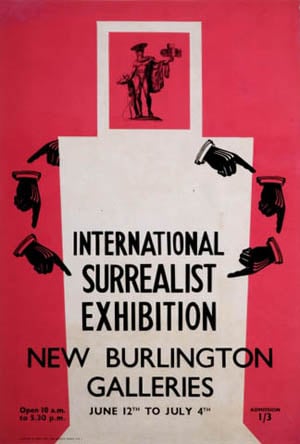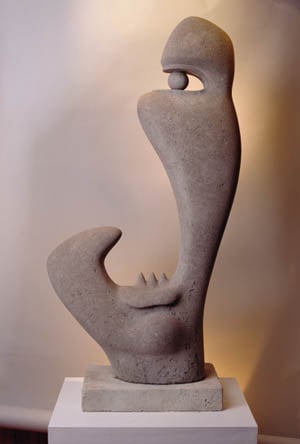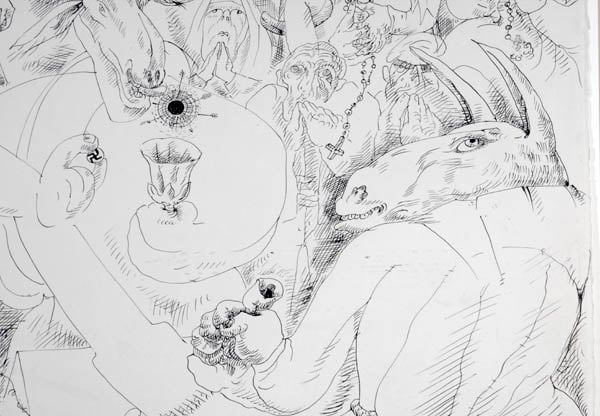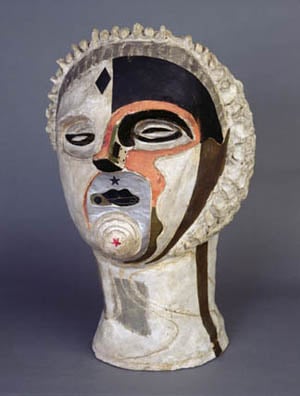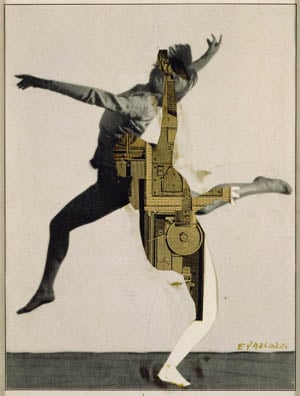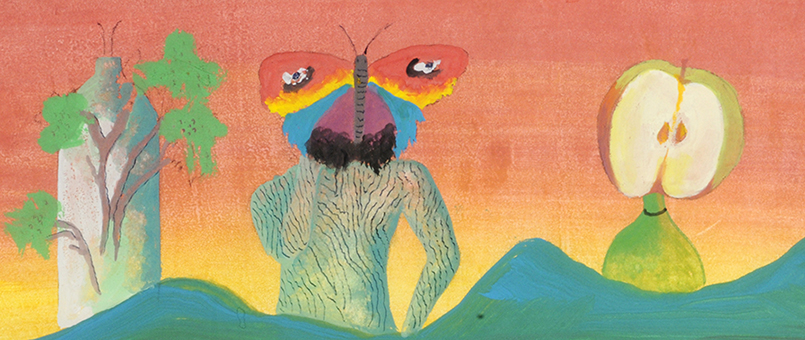
The Surreal World of Dr Jeffrey Sherwin
The Sherwin Collection is acknowledged as being the largest collection of British Surrealist art in the country. Dr.Sherwin talks to Bridgeman about what inspired this collection and the importance of the works within the context of Modern British art
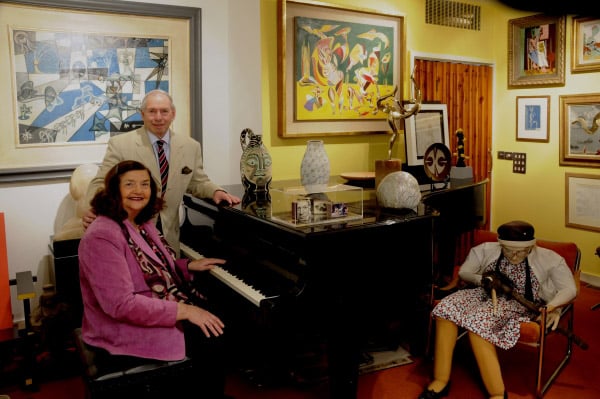
Dr. Jeffrey and Ruth Sherwin, 2008, The Sherwin Collection, Leeds, UK / Bridgeman Images
Q&A with Dr.Sherwin
Which three words would you use to describe your collection?
Dr. S: Academic; personal; eclectic.
What would you like your headstone to read?
Dr. S: ‘I think he moved.’
Will your collection ever be complete?
Dr. S: It all depends on what you mean by complete. Probably not, but my wife thinks the time has come to draw in my horns as we have no walls left to hang things on…but then again..!
‘1936 was an interesting year!’
‘Although surrealism took root in England in the late 1920s, 1936 is considered a watershed with the First International Surrealist Exhibition at the New Burlington Galleries. ‘
Organised primarily by Roland Penrose, David Gascoyne and Herbert Read – with the help of French surrealists such as Breton and Eluard – it featured work by Dalí, Míro and Ernst, as well as a number of British artists. Max Ernst designed the poster of which one is part of the Sherwin collection.
‘1936 was also the year of the Spanish Civil War, the year of the hunger marches, the year of Edward VIII’s abdication and the year I was born.’
‘In the collection there is a 1937 Andre Masson drawing, Mass at Pamplona with the Bishop of Pamplona as a donkey handing out a communion wafer stamped with a Swastika. Ephemera includes a bound copy of the daily Olympia Zeitung charting the infamous 1936 Olympic Games in Berlin.’
Also notable is the Hopton Wood stone Spanish Head, 1939, by FE McWilliam, an Irish surrealist sculptor, and a framed copy of the Daily Express of December 11 1936 headlining the King Abdicates, followed by ‘ Plain Mr Windsor’.
Surrealist Women
‘One of my most requested surrealist works is Angel of Mercy 1934 by Eileen Agar, a plaster collaged head.’
Eileen Agar was born to British parents in Argentina, moving back to England in 1906. She lived in Paris where she met the Surrealists André Breton and Paul Éluard and her work was selected for the International Surrealist Exhibition in 1936.
The sculpture Angel of Mercy was originally titled ‘The Politician’ and collaged in fur. It references its mythological theme in oddly painted swirls of colour, stars and Classics-style hair. Agar exhibited with the surrealists in England and abroad, experimenting with automatic techniques and new materials and making collages and objects.
Other surrealist works by women include a haunting and disturbed head, c.1940 by Leonora Carrington, produced when she was in a mental home suffering from severe depression, and works by Ithell Colquhoun, Edith Rimmington, Emmy Bridgwater and Grace Pailthorpe.
Find out more
Exhibition – British Surrealism Unlocked: Works from the Sherwin Collection is on at the Abbot Hall Art Gallery until 21 June 2014
Explore more Surrealist art in the Bridgeman archive
Save
Save
Save
Save
Save
Save
Save
Save
Save
Save
Save
Save
Save
Save
Save
Save
Save
Save
Save
Save
Save
Save
Save
Save

